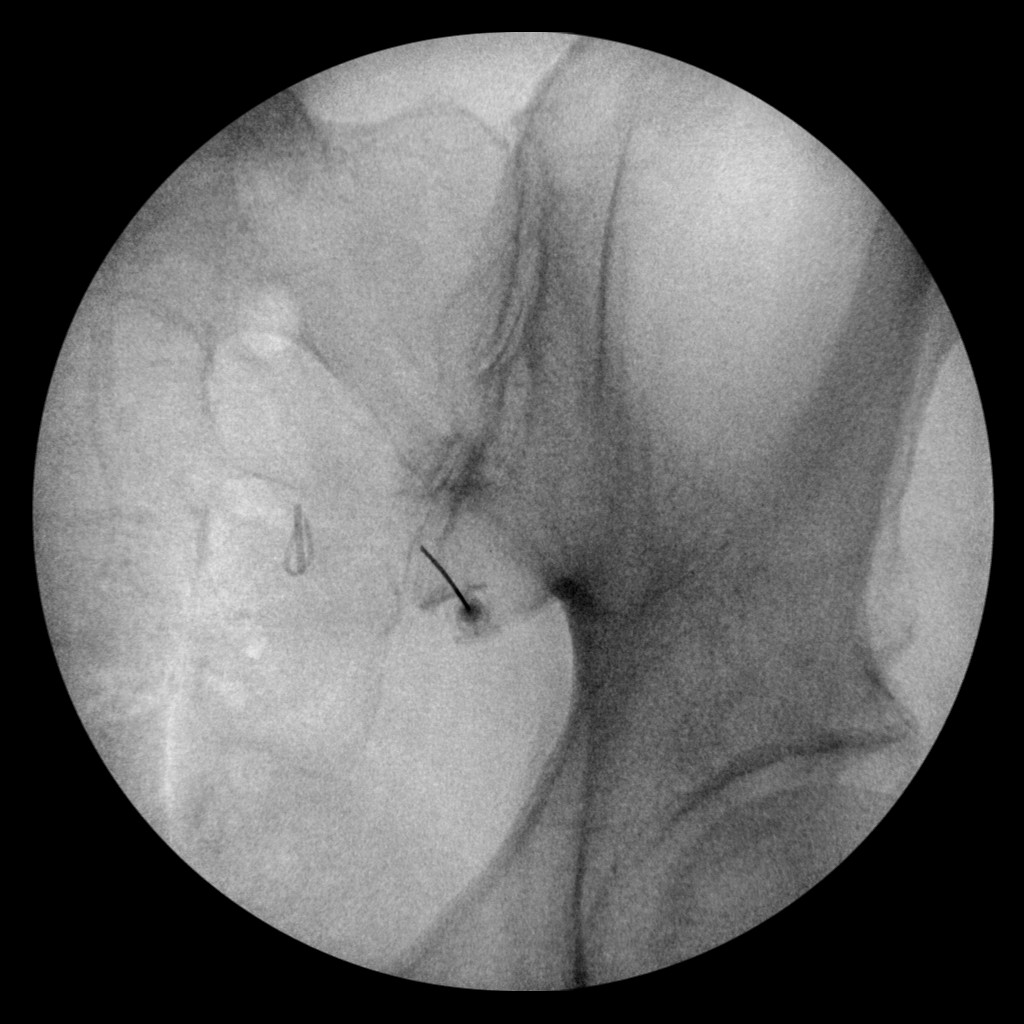Sacroiliac: Junction between your sacrum and iliac bone where the spine meets the pelvis
Steroid: Strong anti-inflammatory
Frequency: Usually performed on one or both sides of the low back depending on the location on your pain. This is typically repeated in 2 weeks if you have gained some relief from the initial procedure. If you have no relieffrom the first injection, you may be a candidate for a procedure to numb the nerves in your low back that tell the joint it has pain (see lumbar medial branch blocks).

Anesthetic: Local
Indications:
A relatively common cause of low back pain, sacroiliitis is an inflammation of the sacroiliac joint. Patients will experience very low back/buttock pain that can radiate to the hip but not usually past the knees. By placing a steroid into the inflamed joint, this decreases the irritation in the joint which decreases your pain. This condition is typically not fixed by surgery.
Contraindications/Reasons why you may not have your injection today:
- Bleeding disorders/low platelet counts
- Medications that thin your blood (please review this section)
- Current infection
- No driver
- Your symptoms have changed and/or improved
- Patient refusal
- Procedure not approved by your insurance
- Poorly controlled high blood pressure that may be giving you symptoms
- Poorly controlled diabetes
- Certain types of glaucoma
- Poorly controlled bipolar disorder
- Allergies to the any of the medications that is being used
Potential side effects/risks of the procedure:
- Increased pain
- Numbness in lower extremities that is short lived
- Infection
- Bleeding
- Allergic reaction
- Cramping in lower extremities
- Mood changes
- Flushed face/extremities
- Headaches
- Worsening of high blood pressure
- Increasing of blood sugars if you have diabetes
- Water retention
- Chronic steroids can cause weight gain
- Seizures
- Stroke
- Nerve and/or spinal cord injury
Procedure:
During the procedure, you will lying on your stomach. An x-ray machine is used to locate the specific level of the spine which is believed to be causing your pain. After your skin is cleaned with an antiseptic solution, typically betadine unless you are allergic, a series of x-rays will be taken to guide the needle placement. The skin is localized with a local anesthetic which is typically the most painful part of the procedure as this medicine has a tendency to burn when it is injected. After this point, you should only feel pressure. If anything is too painful for you, please tell your physician as more numbing medicine can be given at any time. When the needle enters into the joint, contrast/dye is injected to confirm that the needle tip is in the joint. Next, a mixture steroid and local anesthetic solution is slowly injected. You may experience increased pressure in your low back/buttocks region which is normal. At times, you may even feel pressure/increased pain down the leg. That can be expected. However, if at any time the pain is too intense, please tell your physician to slow down your injection. After the medication is injected, the needle is removed and the procedure is completed.
Typical length of the procedure:
10 minutes. Expect to be at the clinic no more than 15 minutes after you have been checked in by the medical assistant into the preoperative area. If this is your first time at our clinic, you will likely be at the clinic for at least one hour. Please plan accordingly.
How long do you expect pain relief:
It is difficult to determine how long and how much pain relief you may experience. It varies depending on multiple factors. Some patients do not gain any relief from the procedure and some may have permanent pain relief. If you experience relief right after this procedure, this can be diagnostic that your pain is coming from the joint.
